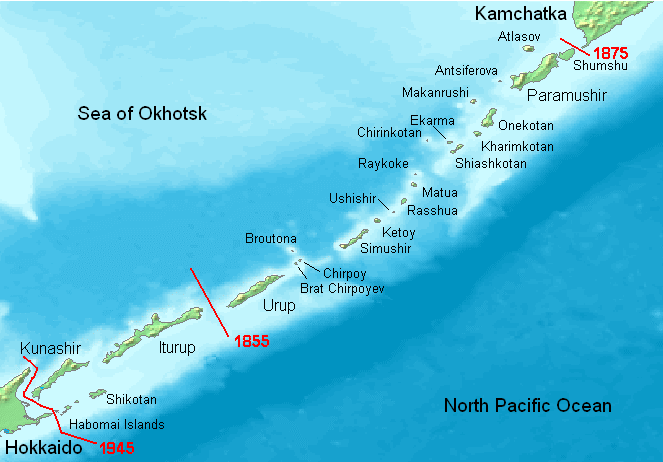 |
| The Kuril's with disputed islands (Wiki Info - Image: Wiki) |
By J. Berkshire Miller
As tensions mount in the East and South China Seas, a dispute over islands between Tokyo and Moscow has also been left unresolved.
Earlier this month, former Japanese Prime Minister Yoshiro Mori appeared on national television and drew a line on the map separating Japan from Russia. Mori’s line was directly northeast of three of the disputed isles (Kunashiri, Shikotan and Habomai) but intentionally stopped short of including the largest island, Etorofu, which remained in Russian territory and signaled Mori’s desire to compromise with Russia. Mori justified this concession as a “realistic approach” to resolving the long standing territorial row between the two countries.
Over the years, there have been a host of diplomatic attempts by both sides to determine who has legal sovereignty over the islands. Unfortunately, the two remain at loggerheads and firmly entrenched in their positions which are muddied by a series of historical treaties dating back to 1855. Tokyo claims that the sovereignty of the Northern Territories (referred to as Southern Kurils by Russia) has never been debatable and that the four disputed islands have been part of Japan since the early 19th century. This is confirmed, according to Japan, by— among other treaties— the Shimoda Treaty of 1855 and the Portsmouth Treaty of 1905 at the conclusion of the Russo-Japanese war. For its part, Russia pays little heed to Japan’s claims on the islands, instead pointing to a number of international treaties—including the Yalta Agreement (1945) and Potsdam Declaration (1945)— as proof of its sovereignty. Russia also emphasizes that the 1951 San Francisco Treaty serves as legal evidence that Japan acknowledged Russian sovereignty over the islands, a claim Tokyo vehemently denies.
Read the full story at The Diplomat
